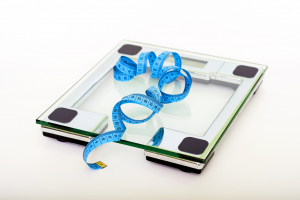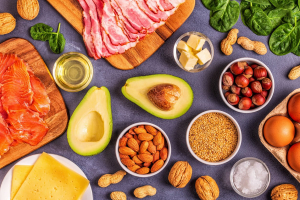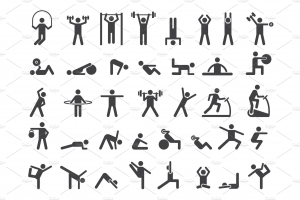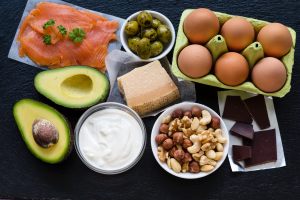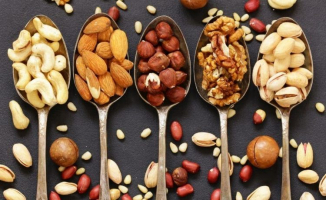Top 10 Best Weight-Loss Diets
Weight loss is a matter of concern for most people. Lose weight to improve your health and fitness. There are many weight loss diets, which are different in ... read more...principle of operation. Some are based on appetite-reducing mechanisms, while others focus on restricting calories, carbohydrates, or fats. Here are the best weight loss diets!
-
Weight Watchers (WW) have been around since the 1960s. It is a flexible scoring diet that calculates points for each type of meal and controls calories. The score is based on the calorie content of the food, so the more calories, the higher the score. The latest release allocates a score budget based on your dietary and activity preferences (foods are scored based on calories, saturated fat, sugar, and protein) - eat anything you want in that range. Alternatively, you can also eat ZeroPoint foods (most fruits and vegetables and lean proteins like fish, beans, tofu, eggs, and chicken breasts fall into this category). The amount of energy loaded on your body should not exceed the permissible limit.
WW has both been shown to promote short-term weight loss in research studies. A 2013 study found that dieters assigned to WW were eight times more likely to lose 10 percent of their body weight in six months than those who tried to diet on their own. In addition, a review of 39 weight control studies from the Weight Watchers diet found that people who directly participated in the diet lost up to 2.6% more weight than those who did not or follow other diets.

Image by Pixabay via pexels.com 
Image by Jill Wellington via pexels.com -
Published in the New England Journal of Medicine in 1997, The low-sodium Dietary Approaches to Stop Hypertension (DASH) Diet is a healthy diet designed to help people not only control their blood pressure but also lose weight. The DASH diet recommends using fruits, vegetables, whole grains, and low-fat or fat-free dairy products and limiting your intake of foods high in saturated fat, such as fatty meats and dairy products from full-fat milk.
"DASH by itself isn't a weight loss diet, but you can certainly lose weight if you create a calorie deficit," says Rosanne Rust. This means that this diet will definitely improve your health by reducing calories while following the DASH Heart Health Rule can help you lose weight and lower your blood pressure. There are two methods that you can apply: small, frequent meals and a few large meals throughout a day. If you want to lose weight, add regular exercise to your healthy eating plan. A 2016 study published in the journal Obesity Reviews found that people on the DASH Diet lost an additional 3.1 pounds over 8 to 24 weeks compared to people on other diets. The best way to hasten treatment is to combine DASH therapy with physical activity. Exercise and sports help keep your body in balance and your blood pressure within an acceptable range.

Image by Susanne Jutzeler, suju-foto via pexels.com 
Image by Jane Doan via pexels.com -
Rebalance your eating habits by removing bad habits and replacing them with good ones with the help of the Mayo Clinic's unique Food Pyramid. This diet emphasizes foods low in energy density, such as fruits, vegetables, and other low-fat foods. That means you can eat more while burning fewer calories. Fruits, vegetables, and whole grains are especially important. The Mayo Clinic Diet is not a temporary diet, so following this eating plan will take longer, but it will give you more sustainable long-term weight loss results than restrictive diets.
The Mayo Clinic Diet is divided into two phases. Phase 1 (Lose It!) is a habit that aims to familiarize you with the weight loss process by adopting 10 healthy habits and giving up 5 unhealthy ones. Phase 2 (Live It!) helps you move on and maintain healthy habits. The Mayo Clinic Diet is ranked 3rd among US News' Best Weight Loss Diets, so you can be sure of its effectiveness. By following the Mayo Clinic diet, you can lose 6-10 pounds in the first two weeks and continue to lose 1-2 pounds per week. The Mayo Clinic Diet ranks 5th on US News' Easiest Diets to Follow. Most dieters will find it difficult the first two weeks. Most dieters will find it difficult the first two weeks. After you start your eating plan in the "Live it!" phase! and realize that no food is completely off-limits, so you'll feel more motivated.

Image by Matheus Cenali via pexels.com 
Image by Cats Coming via pexels.com -
The National Institutes of Health developed the TLC (Therapeutic Lifestyle Changes) Diet to reduce the risk of heart attack and stroke and lower cholesterol levels. The key of TLC diet is reducing fat, especially saturated fat (high-fat meats, low-fat dairy, fried foods) that raise bad cholesterol and increase the risk of heart disease and stroke. Along with strict cholesterol restriction and higher fiber intake, combined with 30 minutes of physical activity a day, TLC can help people lower cholesterol levels without usually requiring medication.
You can start the TLC Diet by choosing your target calorie level. If shed pound is your sole goal, target 1200-1600 calories for men and 1000-1200 calories for women daily. Then you should get less than 7% of your daily calories from saturated fat, less than 200 mg of cholesterol; 25-35% of calories from total fat (including calories from saturated fat); 10-25 g of soluble fiber. Maintain enough calories to reach your desired goals. According to the NIH, if you lose 10 pounds, you’ll decrease your LDL by 5% to 8% – a double bonus for your efforts. It's relatively easy, but requires some motivation to maintain. Whether the TLC diet is easy or not depends on your ability to keep track of what you eat. You can search for a guidebook online like 'The TLC Diet's Guide to Lowering Cholesterol' and 'The Complete Idiot's Guide to the TLC Diet', including recipes cook.

Image by Marianna OLE via pexels.com 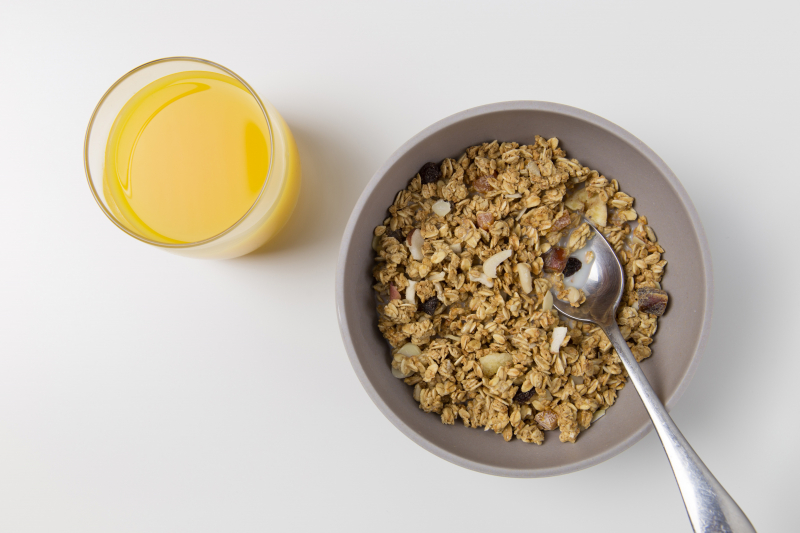
Image by Foodie Factor via pexels.com -
Flexibility is a combination of two words: flexible and vegetarian, which means flexible vegetarian or semi-vegetarian diet, created by American expert, Dawn Jackson Blatner. With this diet, you don't have to completely eliminate meat to reap the health benefits associated with going vegan. While not strictly vegetarian, this diet allows you to enjoy the benefits of vegetarianism while limiting large amounts of animal protein. Because you eat more plants and less meat, is considered planet-friendly.
Filling your plate with more vegetables, fruits, whole grains and plant protein, and sticking to a low-calorie plan, especially with regular physical activity, can help you lose weight and improve your health. A recent study found that people who practiced a Flexitarian Diet had lower rates of metabolic syndrome than those who ate meat on a regular basis. The diet is very flexible and adaptable, even when traveling or on vacation. There are a lot of recipes and you shouldn't spend too much time preparing meals. Eating out and alcohol are allowed. The diet emphasizes flexibility so you don't have to stick to any rules all day, every day. How fast you lose weight and whether you maintain it is entirely up to you.

Image by Ella Olsson via pexels.com 
Image by Pixabay via pexels.com -
The Mediterranean (low-protein) Diet is a scientifically proven healthy diet inspired by the Greek, Italian, French, Spanish, and Italian eating habits of the 1960s. What makes this diet different from others is that it allows for calories from healthy fats like olive oil, combined with nuts and fish at least twice a week, lots of beans, fruits, green leafy vegetables, whole grains and a glass of red daily. alcohol. You can eat cheese in moderation, but limit red meat to once or twice a week. In addition, the strength of this diet is that there is no need to worry about counting calories or nutrients (including protein, fat, starch).
The main draw of this diet is its many health benefits that can reduce the risk of chronic disease and cognitive decline, but if you eat healthy and limit your calorie intake to 1,500 or less per day, It may also lead to weight loss. Studies show that following the traditional Mediterranean Diet or its low-carb version can lead to weight loss of approximately 5-10% of body weight over 12 months. A study published in the British Journal of Nutrition found that people were twice as likely to lose weight when they followed the Mediterranean diet.
Image by Ella Olsson via pexels.com 
Image by Greta Hoffman via pexels.com -
The Volumetrics Diet was developed by Barbara Rolls, PhD, Professor of Nutrition at Pennsylvania State University.. The Volumetrics Diet is different from other weight loss diets that make you hungry, but you eat the right foods that fill you up with fewer calories. The diet emphasizes water-rich, low-calorie foods such as non-starchy fruits and vegetables and broth-based soups, which add volume to foods and help people feel full.
The Volumetrics Diet, in addition to healthy eating habits, will help you consistently lose 1-3 pounds per week. This diet helps you lose weight while eating more.This diet helps you lose weight while eating more. Because volume diets emphasize nutrient-dense, low-calorie foods, you are more likely to lose weight if you follow this eating pattern. In general, diets in high-calorie foods have been shown to help promote satiety and weight loss, according to the Centers for Disease Control and Prevention. The volumetric Diet is unrestricted and relatively easy to follow. Since the diet doesn't ban or restrict entire food groups, you're more likely to stick with it. You are free to eat out as long as you follow the dietary guidelines. Most of the foods in your diet are available at most grocery stores, but you should cook them yourself for best results. Alcohol is allowed for limited use.

Image by Ash via pexels.com 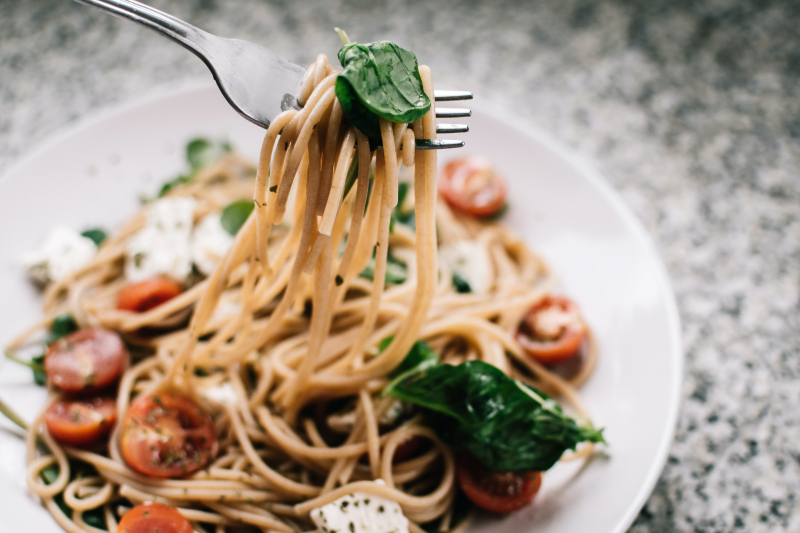
Image by Lisa Fotios via pexels.com -
The Ornish Diet, also known as the lacto-ovo diet, is a low-fat eating style that was created in 1977 by Dr.Dean Ornish, a clinical professor of medicine at the University of California, San Francisco. The Ornish Diet emphasizes eating healthy, plant-based, whole foods and limiting animal and processed foods. This diet does not allow consumption of meat, fish or poultry, but does allow milk and eggs. The diet is one of the four key components of the Ornish Lifestyle Medicine by Sharecare program.
The Ornish Diet is best known for improving heart disease, but you can customize the plan to suit your goals, such as losing weight, lowering blood pressure, and preventing cancer. Studies show that choosing a vegetarian diet can effectively support weight loss. In a study of 76 volunteers, they lost an average of 5 pounds within a year of following the Ornish diet. Unlike some other negative diets, the Ornish Diet helps maintain smooth weight loss without stressing the user. The Diet should be easy to follow and sustainable in the long run. The foods you need are available at most grocery stores, and meals allow for a variety of dishes. The diet also requires a combination of 30 minutes of daily exercise for best results.

Image by cottonbro studio via pexels.com 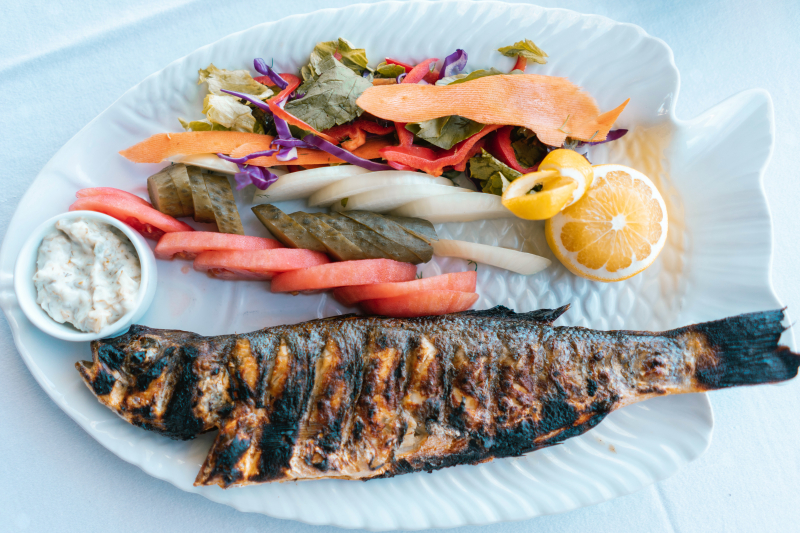
Image by Oleksandr Pidvalnyi via pexels.com -
The Mediterranean-DASH Intervention for Neurodegenerative Delay (MIND) Diet is a combination of the DASH and Mediterranean diets aimed at reducing dementia and the decline in brain health that often occurs as people age. The MIND diet was developed by the late Martha Clare Morris, a nutritional epidemiologist at Rush University Medical Center, through a study funded by the National Institute on Aging that was first published in 2015.
This diet focuses on foods like leafy greens, nuts and berries and is naturally low in carbs. If you follow the MIND Diet, you may lose weight. The initial MIND study was not aimed at weight loss, but rather to improve brain health with the overall goal of reducing the risk of Alzheimer's disease and mental decline. Avoiding these foods can help you lose weight while reducing your risk of dementia. Like the DASH diet, you can lose weight with the MIND diet, so it's a highly adaptable and easy diet. Additionally, studies have shown that the MIND diet reduces the risk of Alzheimer's disease in study participants by up to 53% (those who follow a strict diet). You can also combine the MIND diet with exercise for faster and better results.
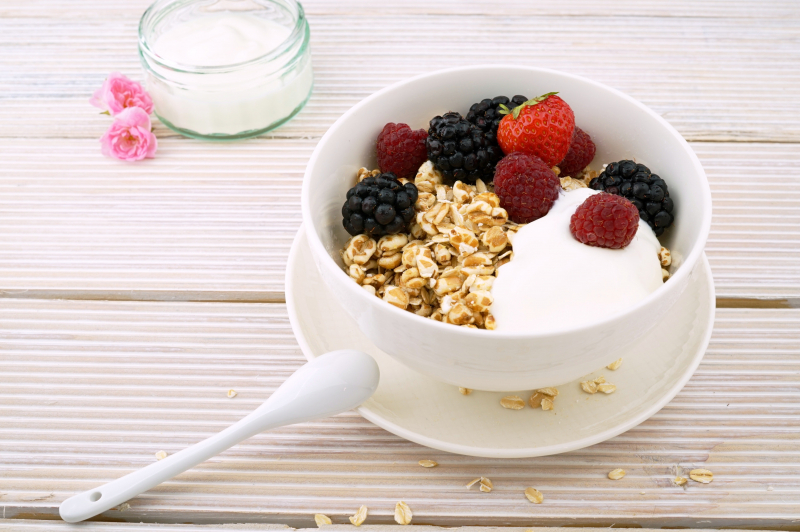
Image by Life Of Pix via pexels.com 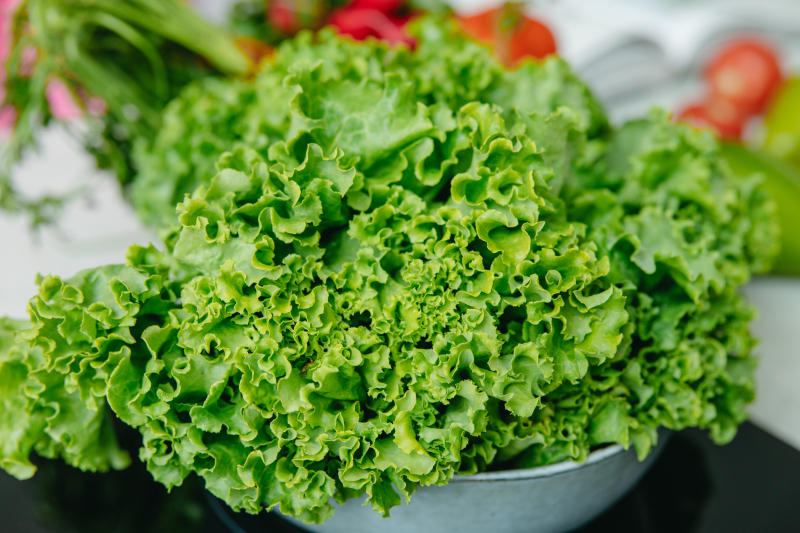
Image by Yaroslav Shuraev via pexels.com -
This Anti-Inflammatory Diet was developed by Dr. Andrew Weil, a physician in integrative medicine, who uses nutritional patterns aimed at reducing chronic inflammation and related conditions such as heart disease, certain cancers, and Alzheimer's disease. Developed based on the Mediterranean diet with some additional elements such as green tea and dark chocolate. The program recommends a variety of fresh foods, with an emphasis on fruits and vegetables that provide phytonutrients, substances found in plants that are beneficial to human health and help prevent various diseases. Additionally, Weil recommends consuming omega-3 fatty acids regularly and avoiding fast food and fried foods altogether.
Weil's method is based on the Mediterranean diet, which has been associated with weight loss and a reduced likelihood of being overweight or obese. Lean protein and healthy fats also help you feel fuller for longer, reducing the risk of mindlessly snacking or overeating. There's a lot of flexibility with anti-inflammatory diets because there's no rigid meal plan. First and foremost, you should tailor your meal plan to adhere to key nutrition guidelines. Your meals should include plenty of fruits and vegetables, whole grains, fish or fish oil supplements. Additionally, the Dr. Weii's Anti-Inflammatory Diet can help reduce the risk of many health conditions that support healthy aging, such as heart disease, diabetes, and cancer.

Image by Valeria Boltneva via pexels.com 
Image by Lisa Fotios via pexels.com














